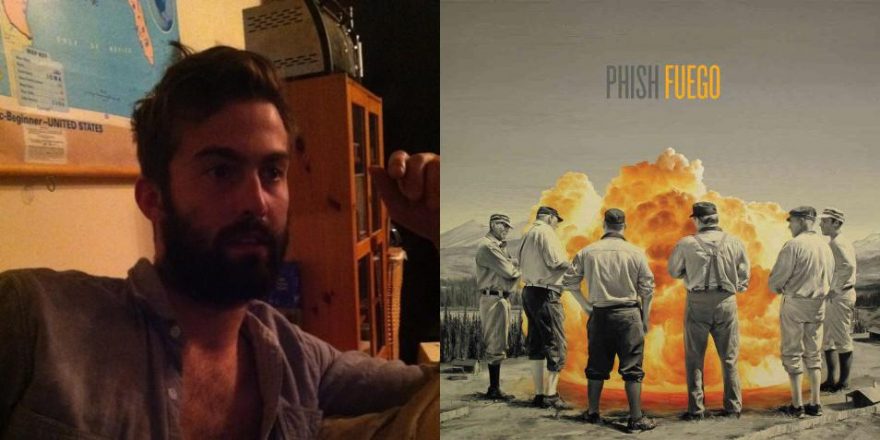I rarely like to share my opinion openly because I feel like it doesn’t matter. Actually, that’s not true. It’s because I’m embarrassed at how opinionated I actually am. I over-analyze everything, sometimes to the point of exhaustion. What ends up being left is a soulless realization, a sculpture whittled down to boring points. My younger self was much more open-minded, but something happened along the way that has made me much more jaded and annoyed. I might be getting older? Maybe it’s the weather? Maybe I’m just hungry… who knows?
My initial response to the Africa Express In C record was pretty cynical: “Right… Africans playing this incredibly esoteric music… ask the African guy to talk about it… hmmm… yeah, OK.” Then I remembered myself at 23 years old: a green, wide-eyed young buck spending days listening to Philip Glass, Steve Reich, Charlemagne Palestine and, well, Terry Riley, the composer of In C (1964). Endless hours digging through my parents’ cassette tapes, searching blogs for interesting music from Africa. I remembered how it all made me feel. The journeys that the music took me on. The ear-to-ear grin that it gave (and continues to give) me. I then decided to let go of my hang-ups and listen to this record with an open mind.
Riley composed In C to be performed by a group (35 people was his ideal but any number is fine). It has since become a hypnotic classic of the minimalist canon. Riley’s insistence on group performances means that the music is about community, and this record is what I expected it to be: African musicians leading notable Western musicians (Brian Eno, Damon Albarn, Nick Zinner, etc.) in the most bugged-out drum-circle jam imaginable. It’s kaleidoscopic, colorful, far out and, mostly, groovy as hell. What I didn’t expect is that I would actually really like it. I lose myself in it and turn into that guy in the middle of the drum circle with his shirt off, hands in the air, blazed out of his mind, smiling. I start wanting to use words like “energy” and “vibe” to explain how I felt about everything and, actually, I look down and realize I’m wearing corduroy patchwork pants.
The jam (notice I have not called this a “piece”) starts typically: two kalimbas playing interlocking patterns. They’re establishing a groove that builds with the entrance of a balafon and, eventually, calabash, djembe, and various percussion. The groove is thick — syrupy and vibrant. It’s undeniable, but in the first six minutes it’s hard to know if you’re listening to In C or the entrance music to The Wild Thornberrys. I really hate to say that, but it’s true. Maybe what I’m trying to say is that these guys grab you by the collar and take you on a journey with them. It happens quickly and there’s no time to think about what’s coming next. I was afraid at the beginning of this journey. I didn’t want to end up in a Nickelodeon movie and as we went along, I realized that neither do the musicians playing.
At the six-minute mark the jam takes a sharp turn into a relentless and cyclical melody. Tension is accentuated by the drums and percussion, and nothing lets up. This happens for another six minutes until the music comes down to a peaceful state. This section here is perhaps the only part of the jam that resembles the original piece itself. The difference is that interlocking patterns and contrapuntal interplay sound so much better with these instruments than with the classical ones in the original. The tones that come out of instruments like the balafon, kalimba and djembe are expressive and immediate. They speak to you rather than play at you. They’re vibrant, like the cultures to which they belong, so the way they interpret music like this is fascinating.
As we go along, deeper into Terry Riley’s rabbit hole, sounds come and go. You start to wonder how the hell the kalimba players’ fingers aren’t bleeding from the relentless playing. You’ll probably start hearing things that aren’t there, but that’s because you’re getting lost in the jam. It’s OK, though. It’s a good thing, man! Perhaps the most tantric and hypnotic elements that help make this happen are the drums and percussion. They’re also what set this apart from other renditions of In C. They make listening to it fun. They bring the music to life in a way that nothing else can. Did you ever expect to dance like this to avant-garde music before?
I wanted to make a profound statement and say that this rendition of In C makes cerebral music feel visceral. But that’s inaccurate because what this has done is make me realize that In C is, in actuality, absolutely visceral on its own. It’s not heady at all. It’s all about feeling, and it makes you feel really good. These guys capture the essence of Terry Riley’s masterpiece and showcase its beauty in the best way imaginable.








